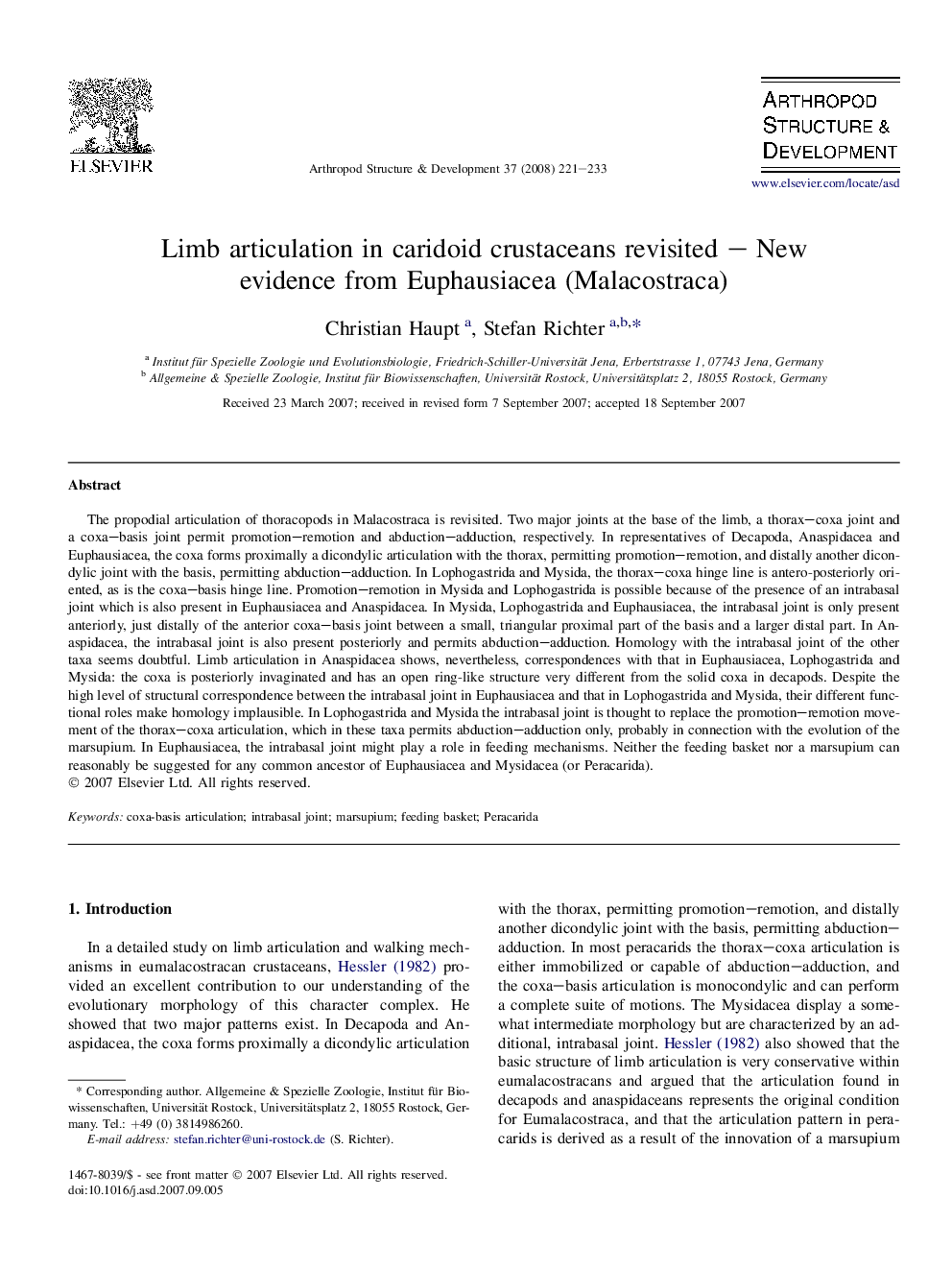| کد مقاله | کد نشریه | سال انتشار | مقاله انگلیسی | نسخه تمام متن |
|---|---|---|---|---|
| 2778950 | 1153183 | 2008 | 13 صفحه PDF | دانلود رایگان |

The propodial articulation of thoracopods in Malacostraca is revisited. Two major joints at the base of the limb, a thorax–coxa joint and a coxa–basis joint permit promotion–remotion and abduction–adduction, respectively. In representatives of Decapoda, Anaspidacea and Euphausiacea, the coxa forms proximally a dicondylic articulation with the thorax, permitting promotion–remotion, and distally another dicondylic joint with the basis, permitting abduction–adduction. In Lophogastrida and Mysida, the thorax–coxa hinge line is antero-posteriorly oriented, as is the coxa–basis hinge line. Promotion–remotion in Mysida and Lophogastrida is possible because of the presence of an intrabasal joint which is also present in Euphausiacea and Anaspidacea. In Mysida, Lophogastrida and Euphausiacea, the intrabasal joint is only present anteriorly, just distally of the anterior coxa–basis joint between a small, triangular proximal part of the basis and a larger distal part. In Anaspidacea, the intrabasal joint is also present posteriorly and permits abduction–adduction. Homology with the intrabasal joint of the other taxa seems doubtful. Limb articulation in Anaspidacea shows, nevertheless, correspondences with that in Euphausiacea, Lophogastrida and Mysida: the coxa is posteriorly invaginated and has an open ring-like structure very different from the solid coxa in decapods. Despite the high level of structural correspondence between the intrabasal joint in Euphausiacea and that in Lophogastrida and Mysida, their different functional roles make homology implausible. In Lophogastrida and Mysida the intrabasal joint is thought to replace the promotion–remotion movement of the thorax–coxa articulation, which in these taxa permits abduction–adduction only, probably in connection with the evolution of the marsupium. In Euphausiacea, the intrabasal joint might play a role in feeding mechanisms. Neither the feeding basket nor a marsupium can reasonably be suggested for any common ancestor of Euphausiacea and Mysidacea (or Peracarida).
Journal: Arthropod Structure & Development - Volume 37, Issue 3, May 2008, Pages 221–233